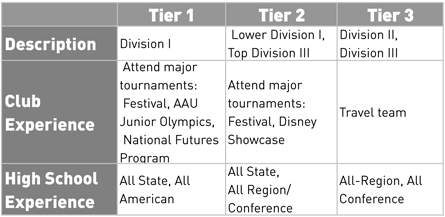TOP 5 RECRUITING THINGS TO DO
1. Develop a recruiting plan and get evaluated by a third party.
What are you currently doing to get evaluated for college scholarships? What results has your current plan produced? If you are not currently being contacted by college coaches at least once per week, then you are not being actively recruited.
You need to be evaluated by as many college coaches nationwide as possible to maximize your scholarship opportunities and securing a college roster spot immediately! Attending several camps and showcases also increases your evaluation exposure to coaches.
2. Create your FREE MyScoutingReport NOW!
Online profiles are the fastest way for college coaches to evaluate a prospects academic qualifications, athletic attributes, highlight/game videos, review game schedules, news articles and how to contact you. Create your FREE MyScoutingReport immediately for scholarship evaluation by college coaches nationwide!
3. Take charge of your game, highlight, or skills video!
DO NOT wait around for someone else to burn game DVD's or edit a highlight video for you! Take control of your recruiting process by taking action each day until your video(s) are complete and accessible by college coaches.
4. Be realistic about your projected college level.
Too many college prospects get focused on playing ONLY for major NCAA Division I programs, that they miss out on opportunities to play at a lower level and possibly on a scholarship.
5. DO NOT LIMIT YOURSELF!
Time and again college prospects limit themselves to only wanting to play at a certain level, local area, in-state, U.S. region or certain conferences. The fact of the matter is that college coaches get to choose which players they want on their roster and which to offer scholarships to. It's not the players or parents that choose...once again, it's the college coaches. By limiting yourself to only certain areas for recruitment, you can bet your life that there will be some college coach around the country that could use a student-athlete like you!
